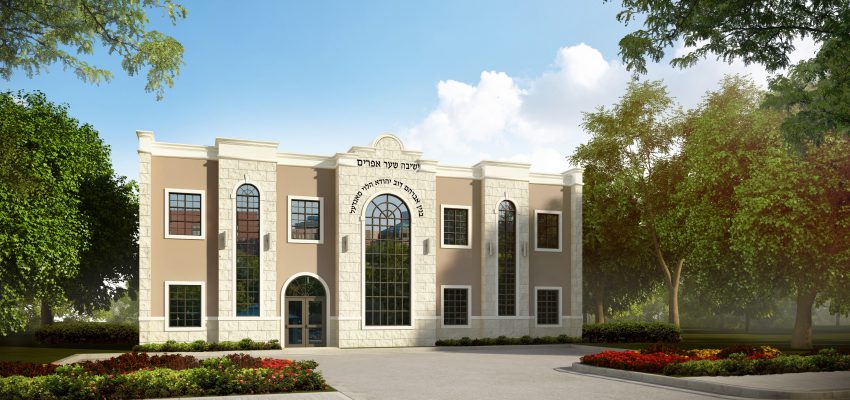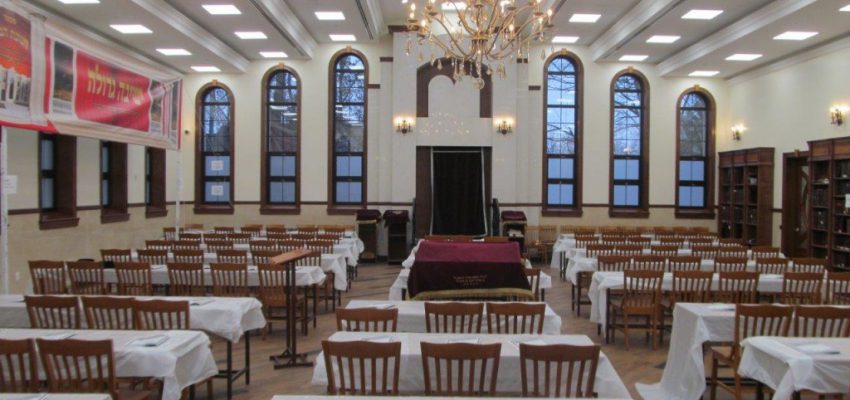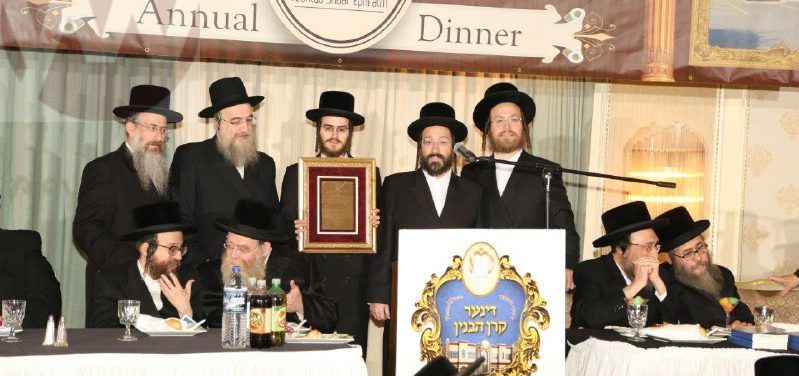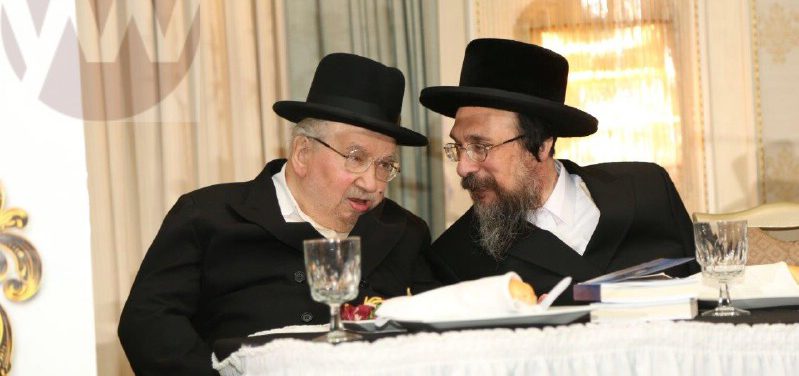MISSION
The mission of the Yeshiva is to replace the Gedolim and Bnei Torah that perished in the Holocaust. This is why there is such an emphasis on Yedias Hatorah to make up what was lost. The goal of the Yeshiva is that at the end of the program, a Talmid should remain in the Olam Hatorah, and if he applies himself according to the prescribed learning standards, to become a Buki B’Shas and Poskim. In short, the program seeks to produce outstanding Bnei Torah who will serve the community. The main purpose and objective of the Yeshiva is to develop Mitzuyunim Muf’lugim concentrating on both learning Gemorah B’iyun Rav al Derech Bekiyus.
A great deal of time and attention is devoted to each individual Buchur so that he can reach his fullest potential as a Ben Torah. Another important part of the Yeshivas’s mission is the learning of Shilchan Aruch. While this is not included in the curriculum of the Yeshiva Ketana, it is a major component of the Yeshiva Gedola’s curriculum.
Over the years, the Yeshiva has produced distinguished Bnei Torah and has earned an international reputation for excellence. If one inquires in any Yeshiva in Eretz Yisroel about the reputation of Shaar Ephraim Talmidim, he will get the strongest confirmation of their Hatzlocha.
The Yeshiva is especially strong in Chelek Ha’bekiyus and in Chelek Ha’iyin. In the morning Seder, there is a strong emphasis in Chelek Ha’iyin, and in the other Sedurim in Chelek Ha’bekiyus. With this focus on in-depth learning, the Hanhula hopes to prepare Talmidim for positions as Rabbonim, Dayunim and Mechanchim.
HISTORY
In 1976, Rabbi Ezriel Tauber, a well respected Askan in the Monsey community, known for his many acts of Chesed and Torah projects, established a Kolel for exceptional Yingeleit which he called Kolel Mechon L’Hoyroa. The Kolel was intended to provide a special Makom Torah in which carefully selected Yingeleit could develop their talents to the fullest.
Instead of offering one curriculum, there were actually a number of options offered. Thus one group of Yingeleit studied Choshen Mishpat, while another studied Gemorah and Tosfes. There was an Iyun Kolel and a Bekiyis Kolel. At its peak, Mechon L’Hoyroa had between 40 and 50 Yingeleit.
In 1983, Reb Ezriel decided to extend this program for younger Bucherim Metzuyunim from the age 13 to 17. The reasoning behind this move was that most Yeshivas tended to cater to Baynonim, or Bucherim with average abilities, since the very weak and the very strong Talmidim were usually casualties in a system in which the Rebbeyim focus their attention and energies on the Baynonim, while the Metzuyunim tended to be left alone and are not given much to do. Reb Ezriel wanted to correct this by creating a Yeshiva program expressly for the Mitzuyunim.
Many of the Bucherim from this new program would then go to Switzerland to learn under Harav Kopelman zatzal, or else to Eretz Yisroel. In fact, Rav Kopelman used to say that he was especially pleased with the Bucherim that would come to him from Mechon L’Hoyroa. One of the basic objectives of this program was that the Buchur who went to Mechon L’Hoyroa for four years had Talmudo B’yado, that is, he knew everything that was learned in those four years.
Typically a Buchur who left the Yeshiva after four years went out knowing 450-500 Blatt of Gemorah B’iyin with Tosfes and Meforshim. Also they were tested on this material repeatedly throughout the program. Every Buchur who completed the program was given a silver Becher with his name on it which attested to his knowing roughly 450 Blatt of Gemorah and Tosfes. This was so to speak the “diploma” that was given to each Mesayem of the program. By all measures, this program was very successful.
The classes in the program were intentionally kept small, with the average class size between 8-10 Talmidim, and the curriculum was very challenging. The Magidei Shiur carefully assessed each Talmid to determine his unique strengths, and gave
each Talmid much individual attention so that the particular talents of each Talmid could be realized. To ensure that no promising Talmid would be turned away because of his inability to afford the cost of tuition, Rabbi Tauber single-handedly financed the Yeshiva.
After about six years of running this program and the Kolel single-handedly, Reb Ezriel realized that he was no longer able to shoulder this responsibility. He decided therefore to separate the two programs, that is, the original Kolel, or graduate program, from the Yeshiva program.
It was during this time that he approached Harav Osher Zelig Greenberg shlita, who was on the faculty of the Yeshiva for a number of years, and who earlier was a student himself in the Mechon L’Hoyroa Kolel, to take over the Yeshiva. Harav Greenberg turned to the local Roshei Yeshiva and Rabbonim of Monsey for their opinion, and they issued a unanimous proclamation that the Yeshiva program not be terminated.
They reasoned that such an important Makom Torah that had provided benefits to the community for so many years should not come to an end. They also encouraged Rav Greenberg to take whatever steps were needed to continue the Yeshiva program, including the purchase of the Yeshiva’s building from Reb Ezriel, who at that time was planning to move the Kolel to a new building.
After receiving the Haskuma of the Monsey Rabbonim, Rav Greenberg agreed to take over the institution and become its Rosh Yeshiva. He brought in a new administrator of the yeshiva, who introduced an effective tuition and fundraising system that would alleviate the financial pressures that the old institution experienced. Also, mainly for financial reasons, the class size of the Yeshiva Ketana was expanded in the new program to over 30 Bucherim in a Shiur.
Despite the many changes and improvements in the organization and financing of the Yeshiva, the educational objectives of the new Yeshiva remained fundamentally unchanged from the original Yeshiva established by Reb Ezriel Tauber. The new Hanhula was very careful to maintain the very high academic standards of the former Yeshiva.
Even before the full Yeshiva Gedola program was established, the Yeshiva Ketana program also included the first kitah of the Yeshiva Gedola. The reason for this was that the Buchurim in the Yeshiva Ketana generally did not go to Eretz Yisroel to learn until they were close to 18. For this reason, we offered the first year of Yeshiva Gedola as a service to the parents during that period of time. It was not until about 8 years ago, however, that the Yeshiva, responding to community pressure, opened a full Yeshiva Gedola program.
The families of Talmidim who were completing the Yeshiva Ketana program were asked not to send their sons to Eretz Yisroel or elsewhere, but to let them continue learning in the new Yeshiva Gedola program of Shaar Ephraim. The Yeshiva Gedola program was started then with 32 Bucherim. Today the Bais Medrash has over 150 Bucherim, with over 60 Bucherim in the first Kitah of the Bais Medrash.
With the creation of the Yeshiva Gedola, the Yeshiva’s name was changed from Mechon L’Hoyroa to the Yeshiva Shaar Ephraim, named after the Rosh Yeshiva’s distinguished father-in-law, Harav Ephraim Oshry zatzal. Rav Oshry, who was a prominent Talmid in the Yeshivas of Ponivez and Slobodka in Europe, was a survivor of the Kovna ghetto and concentration camps.



